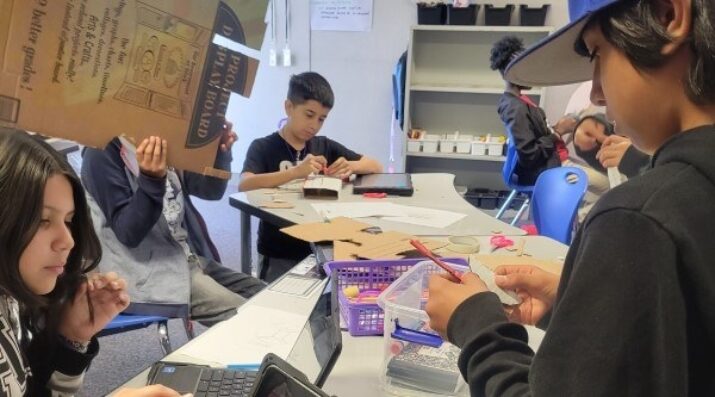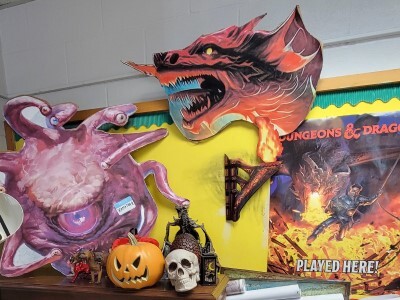6 Teacher Practices for Student Engagement, STEM Identity, and Innovation
Topics

We’ve all had the experience of truly purposeful, authentic learning and know how valuable it is. Educators are taking the best of what we know about learning, student support, effective instruction, and interpersonal skill-building to completely reimagine schools so that students experience that kind of purposeful learning all day, every day.
These six teacher practices support 21st-century skills, increase student engagement, and inspire student innovation.
Do you remember the teacher who had the greatest impact on your life? I will never forget my high school teacher, Mr. Bell. Mr. Bell and I hailed from different parts of the nation, we had different ethnic backgrounds and multiple decades between our ages—our individual identities were starkly different. Nevertheless, he challenged me and my peers to think beyond the classroom, he pushed us to ask questions, and he inspired us to dream big. I belonged in his class, I took up space and I felt empowered.
Now as executive director at Project Invent with a mission to empower students with the 21st-century skills to succeed individually and impact globally, through invention—I find myself in an incredible, impactful role that didn’t exist when I was a high school student. The world of technology has changed in leaps and bounds. However, the curiosity and empowerment I experienced in Mr. Bell’s classroom gave me agency for Project Invent and my global community—it gave me skills to navigate a then unknown future. We know students want to learn how they can have real impact in the community and world around them. We also know 85 percent of jobs in 2030 likely don’t exist yet (Dell Technologies, 2018). We must empower students and support 21st-century skills development as they navigate a rapidly developing technology landscape and global community.
At Project Invent, we have seen six teacher practices best support 21st-century skills development and increase student engagement, encourage student STEM (science, technology, engineering, and math) identity, and inspire student innovation. Teachers implement these practices over a year or semester while students invent for social good.
1. Challenge Assumptions
Condition students to not “fill in the blank” when understanding someone else’s experience. Students are instead encouraged to ask more questions and seek to understand others.
- Sounds Like: “How can we be sure?” “Are we filling in the blank?”
- Looks Like: Asking students to consider additional questions they might ask and students sharing those questions directly with others.
2. Be a Co-Learner
Learn alongside your students and model how to find answers to questions.
- Sounds Like: “I don't know the answer, but here's how I might approach that problem” “I have no idea but let’s find out” “How do you think we can find a next step?”
- Looks Like: Searching the internet for an answer next to your student, reviewing books and other sources with your students, collaborating with your students to learn more, inviting in experts to your classroom to share more about a topic.
3. Let Students Take the Wheel
Resist the urge to give your students the answer or solve for them. Consistently remain a facilitator.
- Sounds Like: “You try first!” “What do you think we should do?” “How should we start?”
- Looks Like: Student-run projects and meetings.
4. Make Failure Okay
Consistently celebrate the learning that comes from things that did not work out.
- Sounds Like: “What can we learn from this?” “How did this experience contribute to our progress?”
- Looks Like: Providing emotional safety, creating time for reflection, supporting a growth mindset.
5. Leave Room for Exploration
Inspire deeper exploration into the problem or solution while helping students feel comfortable about abandoning their plan and pre-existing constraints.
- Sounds Like: “Yes, and…” “What if there was a world where…” “Could you make that idea visual for us?” “Where could we learn more about this?” “Let’s pretend this isn’t a constraint...then what?”
- Looks Like: Inviting wild ideas, listening with curiosity not critique, making time for creative warm ups, abandoning the “plan”
6. Push To the Next Level
Encourage your students to make continuous improvement, build professional solutions, and share their story with confidence!
- Sounds Like: “Who can we reach out to to learn more about this?” “How can we improve this?”
- Looks Like: Providing consistent feedback, networking, raising support, continuous iteration.
The Project Invent team and I have seen these practices firsthand in classrooms and it’s incredible to see students light up with excitement and develop real confidence. The world needs more fearless, compassionate problem solvers and we know it begins with teachers like you! Tell us if you’ve tried any of these practices in your classroom! Join us for our next Project Invent Teacher Fellowship as we dive deeper into each practice through invention this July 2023!
Image at top, courtesy of Project Invent: Project Invent Fellow Flor Rekani and her team at Bostonia Global, thinking big ideas.




